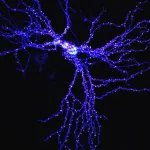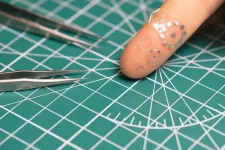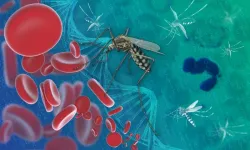(Press-News.org) About The Study: This scoping review determined that although artificial intelligence (AI) dermatology mobile apps hold promise for improving access to care and patient outcomes, in their current state, they may pose harm due to potential risks, lack of consistent validation, and misleading user communication. Addressing challenges in efficacy, safety, and transparency through effective regulation, validation, and standardized evaluation criteria is essential to harness the benefits of these apps while minimizing risks.
Authors: Veronica Rotemberg, M.D., Ph.D., of Memorial Sloan Kettering Cancer Center in New York, and Associate Editor, JAMA Dermatology, is the corresponding author.
To access the embargoed study: Visit our For The Media website at this link https://media.jamanetwork.com/
(doi:10.1001/jamadermatol.2024.0468)
Editor’s Note: Please see the article for additional information, including other authors, author contributions and affiliations, conflict of interest and financial disclosures, and funding and support.
# # #
Media advisory: This article is being released to coincide with presentation at the 2024 American Academy of Dermatology Annual Meeting.
Embed this link to provide your readers free access to the full-text article This link will be live at the embargo time https://jamanetwork.com/journals/jamadermatology/fullarticle/10.1001/jamadermatol.2024.0468?guestAccessKey=fcd7d1aa-de4b-451c-86e3-0b77d90f97d9&utm_source=For_The_Media&utm_medium=referral&utm_campaign=ftm_links&utm_content=tfl&utm_term=030724
END
Current state of dermatology mobile applications with AI features
JAMA Dermatology
2024-03-07
ELSE PRESS RELEASES FROM THIS DATE:
Surprise: Egg-laying amphibian provides nutrient-rich “milk” to its young
2024-03-07
An egg-laying species of worm-like amphibian feeds a lipid-rich milk-like substance to its hatchlings, according to a new study. The findings report a previously unobserved behavior and offer new insight into the species’ parental care and communication. Among vertebrates, the embryonic yolk is often the only nutritional investment mothers offer to feed offspring. However, some species have developed parental care behaviors involving the production and provisioning of specialized foods, such as the production of lipid-rich milk in mammals. Feeding offspring with nutrient-rich milk was long seen as a trait unique to mammals. However, several non-mammalian ...
Fishing for oil and meat drives deepwater shark and ray decline
2024-03-07
The international liver oil and meat trade is driving rapid depletion of deepwater sharks and rays – an outcome that is potentially irreversible due to these animals’ extremely slow life histories. The findings highlight the need for immediate trade and fishing regulations . The deep ocean – the largest and one of the most complex ecosystems on Earth – is considered the last natural biodiversity refuge from the reach of human activities. It also remains one of the Earth’s least-studied environments. As such, there have been no comprehensive evaluations of the state of deepwater biodiversity. Despite international commitments ...
Atmospheric carbon dioxide drawdown from rock weathering processes has its limits
2024-03-07
Atmospheric carbon dioxide (CO2) drawdown from the chemical weathering of rocks peaks across a narrow range of moderate erosion rates, according to a new study. The findings provide new insights into the constraints of weathering-mediated CO2 drawdown and help to resolve conflicting data on the impact of uplift and erosion on the carbon cycle. The chemical weathering of rocks on Earth’s surface, in part, mediates the concentration of CO2 in the atmosphere and, thereby, the planet’s climate. Understanding the constraints of this process is critical to modeling Earth’s evolution over geologic time scales and ...
Introducing BioSUM: a bioresorbable ultrasonic sensor to detect post-surgical leaks
2024-03-07
A new device tested in pigs enables monitoring and early detection of pH changes in deep tissues due to post-operative leaks following gastrointestinal surgery. Such leaks – which occur at high rates 3-7 days following surgery – can be fatal if overlooked, and as such, require constant monitoring. Yet, early detection of these leaks remains a challenge. To address this need, Jaiqi Liu and colleagues developed a novel class of pH-responsive materials for real-time ultrasound measurement of pH changes indicative of leaks from healing ...
Rock weathering and climate: Low-relief mountain ranges are largest carbon sinks
2024-03-07
For many hundreds of millions of years, the average temperature at the surface of the Earth has varied by not much more than 20° Celsius, facilitating life on our planet. To maintain such stable temperatures, Earth must have a ‘thermostat’ that regulates the concentration of atmospheric carbon dioxide over geological timescales, influencing global temperatures. The erosion and weathering of rocks are important parts of this ‘thermostat.’ A team led by LMU geologist Aaron Bufe and Niels Hovius from the German Research Centre for Geosciences has now modeled the influence of these processes on carbon in the atmosphere. Their surprising result: CO2 capture through weathering ...
Often seen, never studied: First characterization of a key postsynaptic protein
2024-03-07
A protein that appears in postsynaptic protein agglomerations has been found to be crucial to their formation. The Kobe University discovery identifies a new key player for synaptic function and sheds first light on its hitherto uncharacterized cellular role and evolution.
What happens at the synapse, the connection between two neurons, is a key factor in brain function. The transmission of the signal from the presynaptic to the postsynaptic neuron is mediated by proteins and their imbalance can lead to neuropsychiatric ...
How does a virus hijack insect sperm to control disease vectors and pests?
2024-03-07
UNIVERSITY PARK, Pa. — A widespread bacteria called Wolbachia and a virus that it carries can cause sterility in male insects by hijacking their sperm, preventing them from fertilizing eggs of females that do not have the same combination of bacteria and virus. A new study led by microbiome researchers at Penn State has uncovered how this microbial combination manipulates sperm, which could lead to refined techniques to control populations of agricultural pests and insects that carry diseases like Zika and dengue to humans.
The study is published in the March 8 issue of the journal Science.
“Wolbachia is the most widespread bacteria in ...
How the brain coordinates speaking and breathing
2024-03-07
CAMBRIDGE, MA -- MIT researchers have discovered a brain circuit that drives vocalization and ensures that you talk only when you breathe out, and stop talking when you breathe in.
The newly discovered circuit controls two actions that are required for vocalization: narrowing of the larynx and exhaling air from the lungs. The researchers also found that this vocalization circuit is under the command of a brainstem region that regulates the breathing rhythm, which ensures that breathing remains dominant over speech.
“When you need to breathe in, you have to stop vocalization. We found that the neurons that control vocalization ...
Shape-shifting ultrasound stickers detect post-surgical complications
2024-03-07
EVANSTON, Ill. — Researchers led by Northwestern University and Washington University School of Medicine in St. Louis have developed a new, first-of-its-kind sticker that enables clinicians to monitor the health of patients’ organs and deep tissues with a simple ultrasound device.
When attached to an organ, the soft, tiny sticker changes in shape in response to the body’s changing pH levels, which can serve as an early warning sign for post-surgery complications such as anastomotic leaks. Clinicians then ...
The Malaria parasite generates genetic diversity using an evolutionary ‘copy-paste’ tactic
2024-03-07
By dissecting the genetic diversity of the most deadly human malaria parasite – Plasmodium falciparum – researchers at EMBL’s European Bioinformatics Institute (EMBL-EBI) have identified a mechanism of ‘copy-paste’ genetics that increases the genetic diversity of the parasite at accelerated time scales. This helps solve a long-standing mystery regarding why the parasite displays hotspots of genetic diversity in an otherwise unremarkable genetic landscape.
Malaria is most commonly transmitted through the bites of female Anopheles mosquitoes infected with P. falciparum. The latest world malaria report ...
LAST 30 PRESS RELEASES:
Making lighter work of calculating fluid and heat flow
Normalizing blood sugar can halve heart attack risk
Lowering blood sugar cuts heart attack risk in people with prediabetes
Study links genetic variants to risk of blinding eye disease in premature infants
Non-opioid ‘pain sponge’ therapy halts cartilage degeneration and relieves chronic pain
AI can pick up cultural values by mimicking how kids learn
China’s ecological redlines offer fast track to 30 x 30 global conservation goal
Invisible indoor threats: emerging household contaminants and their growing risks to human health
Adding antibody treatment to chemo boosts outcomes for children with rare cancer
Germline pathogenic variants among women without a history of breast cancer
Tanning beds triple melanoma risk, potentially causing broad DNA damage
Unique bond identified as key to viral infection speed
Indoor tanning makes youthful skin much older on a genetic level
Mouse model sheds new light on the causes and potential solutions to human GI problems linked to muscular dystrophy
The Journal of Nuclear Medicine ahead-of-print tip sheet: December 12, 2025
Smarter tools for peering into the microscopic world
Applications open for funding to conduct research in the Kinsey Institute archives
Global measure underestimates the severity of food insecurity
Child survivors of critical illness are missing out on timely follow up care
Risk-based vs annual breast cancer screening / the WISDOM randomized clinical trial
University of Toronto launches Electric Vehicle Innovation Ontario to accelerate advanced EV technologies and build Canada’s innovation advantage
Early relapse predicts poor outcomes in aggressive blood cancer
American College of Lifestyle Medicine applauds two CMS models aligned with lifestyle medicine practice and reimbursement
Clinical trial finds cannabis use not a barrier to quitting nicotine vaping
Supplemental nutrition assistance program policies and food insecurity
Switching immune cells to “night mode” could limit damage after a heart attack, study suggests
URI-based Global RIghts Project report spotlights continued troubling trends in worldwide inhumane treatment
Neutrophils are less aggressive at night, explaining why nighttime heart attacks cause less damage than daytime events
Menopausal hormone therapy may not pose breast cancer risk for women with BRCA mutations
Mobile health tool may improve quality of life for adolescent and young adult breast cancer survivors
[Press-News.org] Current state of dermatology mobile applications with AI featuresJAMA Dermatology



